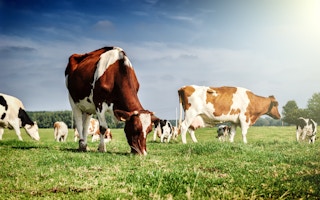Counterfeit ‘natural capital’ has started entering the market to hide the fact that agriculture is running a deficit. For instance, reports abound of widespread, indiscriminate use of synthetic fertilizers and carcinogenic pesticides, used to replace natural soil fertility and biological pest control. Switching capital providers results in increasing financial costs for farms, inhibits nature’s bank to provide these services for free in the future, and can also cause significant impacts to public health through pollutants emitted to air, land, and water. TEEB for Agriculture and Food, a project hosted by the United Nations Environment Programme responsible for promoting the sustainable use of natural capital in agriculture, asked Trucost to investigate further.
Where to begin
It turns out that ecosystem services are the most popular form of currency used to withdraw the hidden value of nature. Agriculture is heavily indebted to the provision of free ecosystem services, but has become so focused on the pursuit of maximizing yields that nature can no longer provide the required liquidity. Man-made alternatives have tried to fill the deficit, but this results in short-term gains that mask long-term declines in nature’s reserves. Stories about this credit crisis are becoming increasingly common as businesses, politicians, and society at large begin to feel the shock of nature’s credit crunch. The recent drought in California, or the disappearance of the Aral Sea (formerly the fourth largest lake in the world) due to overexploitation by agriculture, are salient reminders of our reliance on nature’s capital.
As a result, TEEB commissioned Trucost and other experts to look into the positive and negative impacts of agriculture on nature, which includes the value that nature is providing to agriculture for free. This included an audit of the natural capital accounts of palm oil production, rice cultivation, as well as three livestock farming sectors. The results show how each type of farming affects nature’s bank, and what can be done to rebuild its capital.
Palm oil
Palm oil production is a global focus for sustainability efforts due to deforestation. The research found that Indonesia and Malaysia, which together produce over 70 per cent of the world’s palm oil, had an impact on nature and human health of around $40bn each year. Trucost delved into specific production practices to identify where these costs could be reduced and what the financial implication of making changes could be.
The choice of land conversion methods, which can involve the mechanical clearing or burning of primary rainforest, can significantly affect the impacts caused by palm oil producers. A series of seven scenarios were tested which showed that by burning the peat soils that support primary rainforest, the greatest damage was inflicted on human health and natural capital. The impacts could cause as much as $314,000 per hectare when considering the impact of air pollutants and greenhouse gas emissions alone. Check out recent haze incidents in Singapore for some shocking visual proof (see here).
The findings go on to show that the short term financial gains from this type of land conversion are outweighed by the long term financial costs that are caused due to decreasing soil fertility and subsequent yield reduction. Alternative land conversion methods could even yield positive impacts. This could be achieved by converting grasslands on mineral soils using mechanical clearing methods.
“
By continuing to withdraw from nature’s bank and deplete its capital, sooner rather than later, we will learn the true cost of inaction.
Similar results can also be found by changing fertilizer application methods and altering how farms treat palm oil mill effluent (POME) - the run-off that produces ponds of methane emitting waste. Improving fertilizer application methods could reduce businesses impact on human health and natural capital by over 50 per cent per hectare, where capturing methane from POME could reduce impacts by up to 93 per cent .
Rice and beef
The interaction between businesses, nature, and society is increasingly being looked at with a ‘systems’ perspective. This means that we are beginning to understand our influence on nature’s capital, and the results of these impacts in a number of ways. So not only can we impact nature by changing how we directly withdraw its capital, but also through the selection of production processes, farming practices, purchasing decisions and financial incentives provided to farmers. The rice study aimed to explore the relationship between some of these trade-offs in a little more detail.
Rice is one of the most important crops in the world, grown on over 144 million farms and producing over 740 million tonnes in 2013, 90 per cent of which is in Asia. Trucost and the United Nations Food and Agriculture Organization (FAO) analysed the inputs and outputs, as well as the costs and benefits, of 25 rice farming practices in five countries. Trade-offs, such as rice yield versus maintenance of water quality, water use, or GHG emission reduction, were analysed from hundreds of academic papers to highlight trends in the performance of different farming systems. Results showed that it is possible to maintain rice yields whilst reducing the amount of artificial inputs such as herbicides. For instance, in 40 per cent of the cases analysed, there was no difference in yields from reducing herbicide inputs on irrigated lowland rice farms. In the Philippines, when herbicide inputs were reduced, this resulted in a 3 per cent reduction in the value of rice produced, but a 98 per cent reduction in the damage caused by herbicide application.
But the impact of farming is not limited to the production of popular cereals and oilseeds. Increasing affluence in developing countries suggests that the demand for expensive commodities that intensively borrow from and impact nature will rise significantly. Beef is one of those products.
Deforestation — the activity that wipes out vast amounts of nature’s capital — is one of the main impacts of concern. For instance, large swathes of Amazonian rainforest are cleared to make way for cattle, which can give short term boosts to the economy from the sale of beef and timber, but can have much harsher consequences for the economy in the long term. These can materialize as nature struggles to build its capital reserves back to previous levels. A 2013 TEEB report on the top 100 externalities of business shows the loss of ecosystem services resulting directly from cattle production in South America, such as carbon sequestration, soil erosion prevention, and water provisioning, can mean that we are wiping out over $300bn of nature’s capital per year.
A third study, led by Wageningen University in the Netherlands, shows the effect of different types of management systems in cattle farming. For instance, by improving pasture management and finishing in feedlots, where cattle are fattened for the last 3-6 months of the production process, a 20 per cent reduction in greenhouse gas emissions in Brazilian cattle farming can be achieved. Results also highlight that water pollution is reduced by improving pasture management, yet finishing in feedlots actually increases the impact on nature’s capital through decreasing water quality. Trade-offs in cattle farming were also highlighted between lowering water pollution, GHG emissions and land use in dairy farming versus the conservation of biodiversity in alternative pastoralist farming systems.
A way forward
The message is simple: sustainable farming can be profitable for farmers and nature. Smart interventions and improvements in farming practices, as can be found in these studies, can reduce agriculture’s impact on natural capital and restore nature’s bank to pre-crisis levels. Sustainable farming enables proper ecosystem functioning which builds resilience into farming systems, making them more able to cope with sudden shocks. By continuing to withdraw from nature’s bank and deplete its capital, sooner rather than later, we will learn the true cost of inaction.
Chris Baldock is a senior research analyst at Trucost. This article was republished with permission from the Trucost blog. Trucost’s report for TEEB will be published in December 2015. You can download Trucost’s research for the Food and Agriculture Organization of the United Nations here.


















